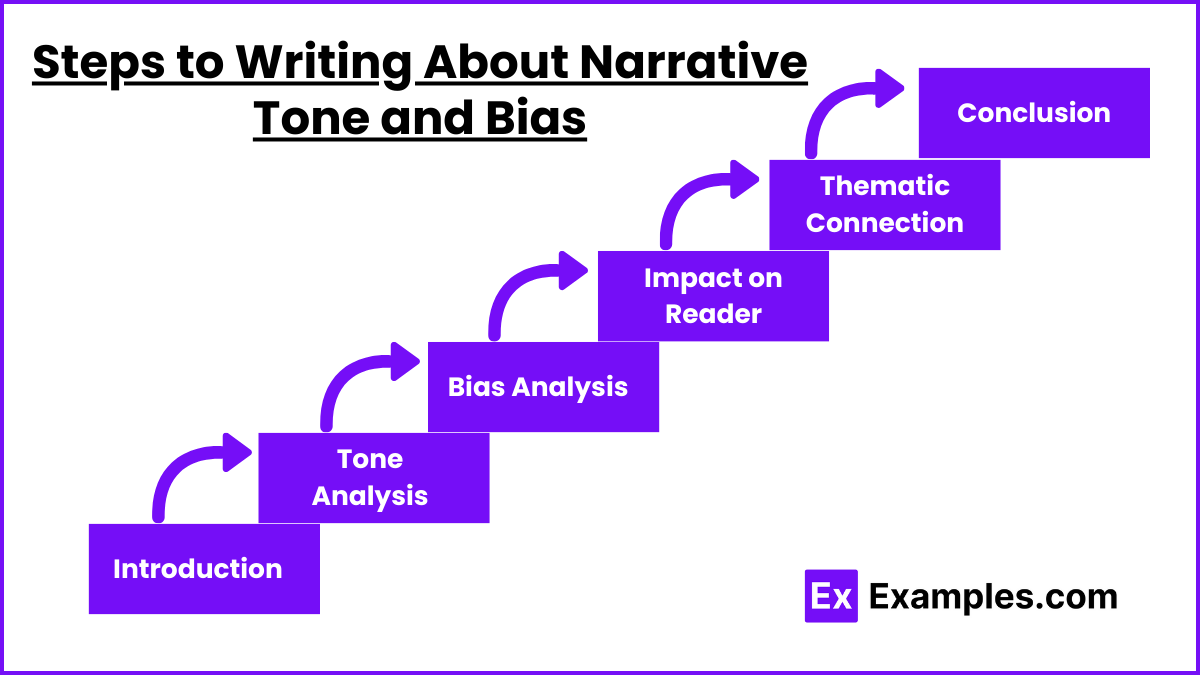In the study of AP English Language and Composition, understanding the effect of narrative tone and bias is crucial for deep literary analysis. Narrative tone, conveyed through rhetorical sentences and cumulative sentences, shapes the reader’s emotional response and interpretation of the text. Recognizing bias helps students critically assess the author’s perspective and its impact on the narrative. These skills enhance argumentative speech and argumentative writing, enabling students to construct compelling arguments that explore how tone and bias influence reading comprehension and thematic understanding.
Learning Objectives
By the end of this lesson on the effect of narrative tone and bias, students will be able to construct cumulative sentences that detail how tone and bias shape narratives, write an explanatory essay exploring these effects, and develop an expository essay analyzing their impact on character portrayal and themes. They will learn to create rhetorical sentences that effectively highlight these influences, formulate a final thesis statement that encapsulates their analysis, and enhance their critical thinking skills by evaluating the nuanced ways tone and bias affect reading comprehension and interpretation.
Narrative Tone

Narrative tone refers to the author’s attitude toward the subject matter or the audience, conveyed through their choice of words and style. Tone can range from formal to informal, serious to humorous, and everything in between.
Key Features of Narrative Tone
- Diction: The choice of words used by the author that conveys tone.
- Syntax: Sentence structure and its effect on tone.
- Imagery: Descriptive language that evokes sensory experiences and influences tone.
- Mood: The atmosphere created by the tone, affecting the reader’s emotional response.
Analyzing Narrative Tone
- Identify the Tone: Determine the overall attitude conveyed in the text (e.g., ironic, hopeful, critical).
- Textual Evidence: Find specific examples of diction, syntax, and imagery that contribute to the tone.
- Impact on Reader: Consider how the tone affects the reader’s perception and emotional response.
- Thematic Connection: Analyze how the tone reinforces or contrasts with the themes of the work.
Narrative Bias

Narrative bias occurs when the author’s personal beliefs, opinions, or prejudices influence the way a story is told. Bias can shape the portrayal of characters, events, and settings, leading to a slanted or one-sided perspective.
Key Features of Narrative Bias
- Selective Storytelling: Highlighting certain aspects while downplaying or ignoring others.
- Character Portrayal: Depicting characters in a favorable or unfavorable light based on the author’s perspective.
- Cultural and Social Context: The influence of the author’s cultural and social background on the narrative.
- Language Use: Loaded language and connotations that reveal bias.
Analyzing Narrative Bias
- Recognize Bias: Identify any signs of bias in the narrative, such as selective storytelling or character portrayal.
- Author’s Perspective: Consider the author’s background and how it might influence their perspective.
- Comparative Analysis: Compare the narrative with other sources or perspectives to identify bias.
- Impact on Reader: Reflect on how bias shapes the reader’s understanding and interpretation of the story.
Examples
- Narrative Tone:
- “Pride and Prejudice” by Jane Austen: The witty and ironic tone highlights social criticisms.
- “1984” by George Orwell: The bleak and oppressive tone reinforces themes of dystopia and totalitarianism.
- Narrative Bias:
- “Heart of Darkness” by Joseph Conrad: The portrayal of African characters reflects colonial bias.
- “To Kill a Mockingbird” by Harper Lee: Atticus Finch’s perspective highlights social justice themes but may contain implicit biases reflective of its time.
Steps to Writing About Narrative Tone and Bias

- Introduction: Introduce the concepts of narrative tone and bias and their importance in literary analysis.
- Tone Analysis: Identify the tone of the text and provide textual evidence.
- Bias Analysis: Recognize and discuss any biases present in the narrative.
- Impact on Reader: Analyze how tone and bias affect the reader’s interpretation and emotional response.
- Thematic Connection: Discuss how tone and bias relate to the themes of the work.
- Conclusion: Summarize the significance of understanding tone and bias in literary analysis.


